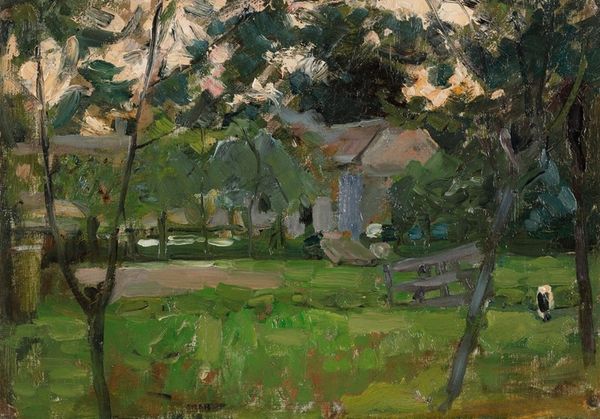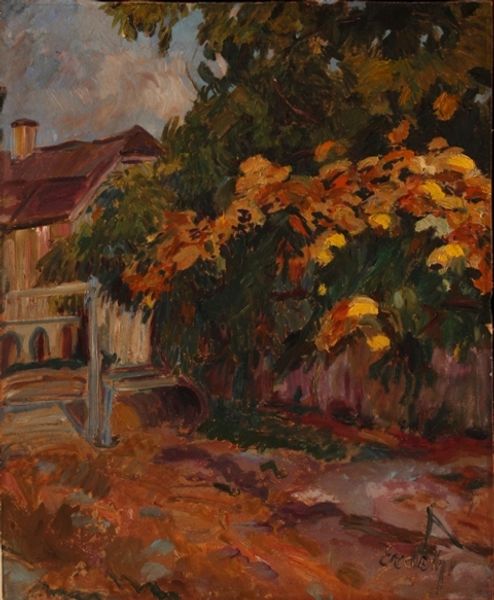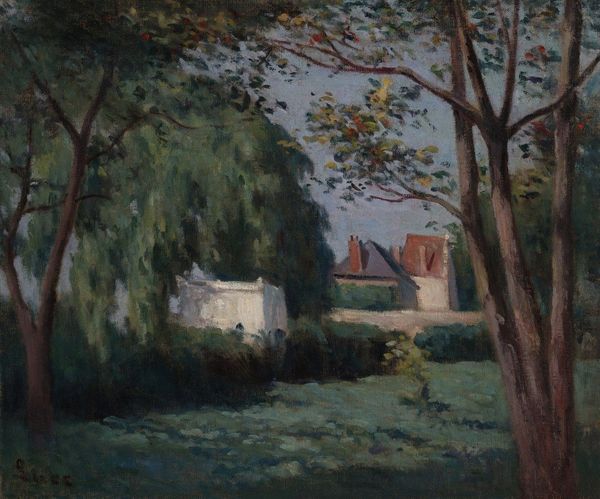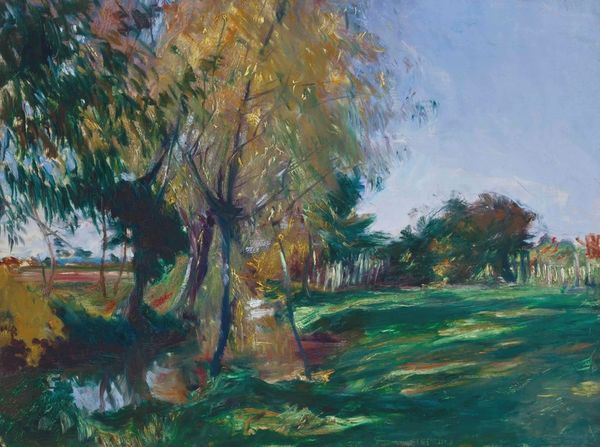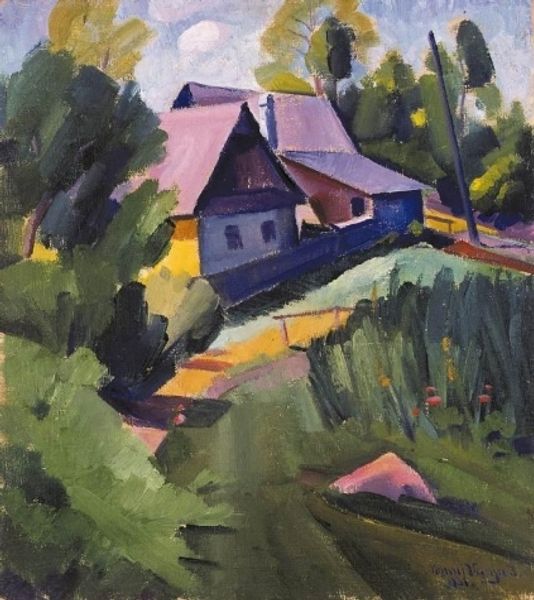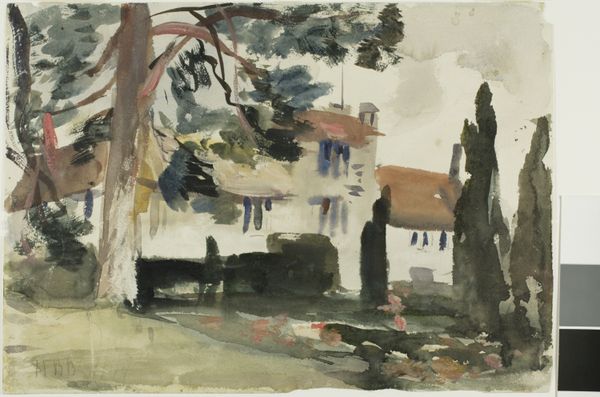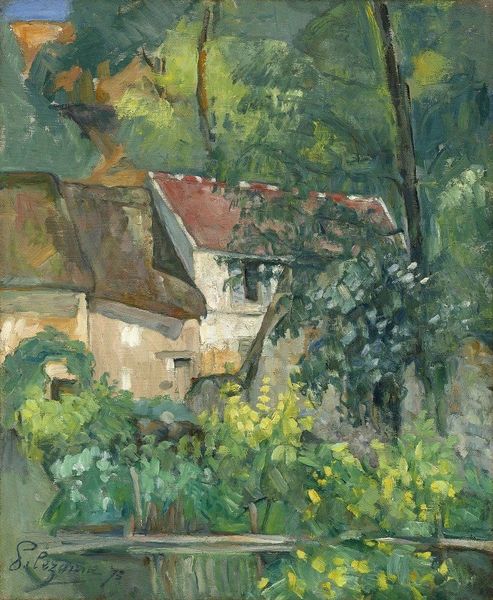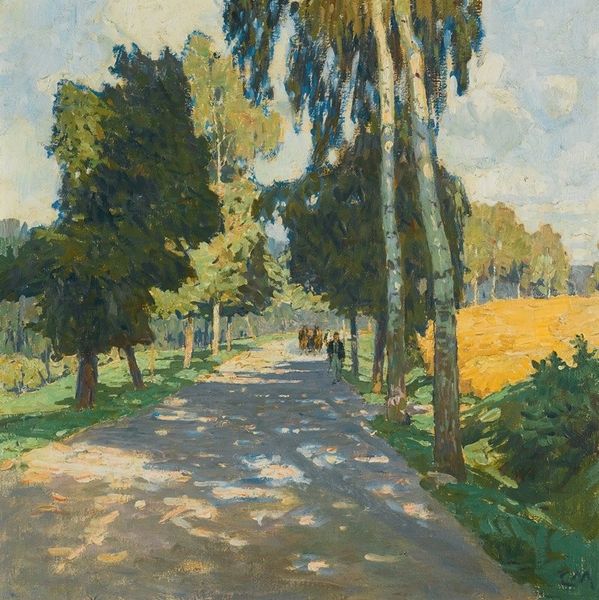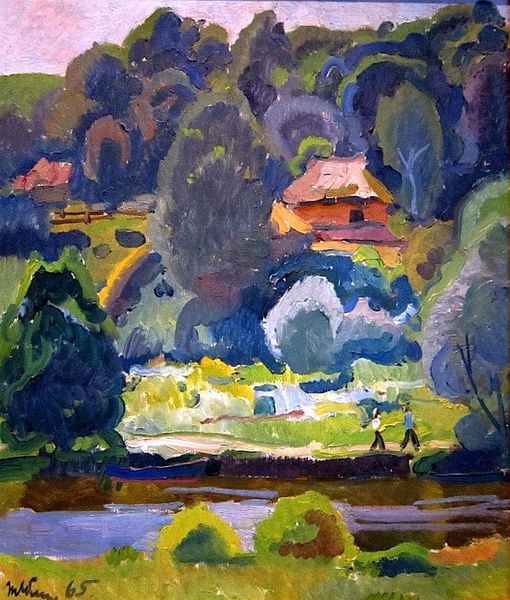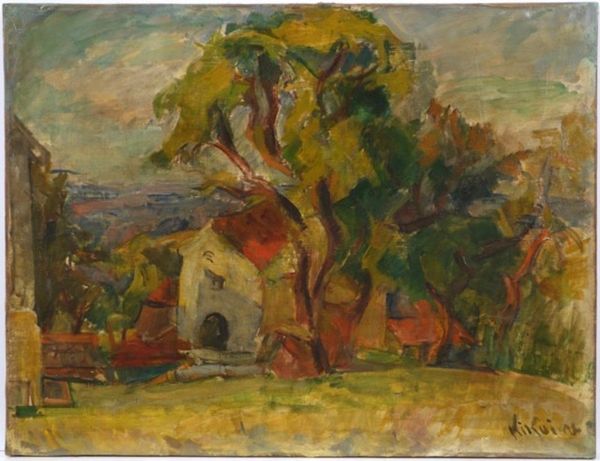
Copyright: Public Domain: Artvee
Curator: Leo Putz’s “Park von Schloss Fu\u00dfberg in Gauting,” created in 1928. The thick impasto and broken brushstrokes certainly capture one’s attention. What are your immediate impressions? Editor: Well, immediately I’m struck by its subdued, almost melancholic tone. There’s a blurring between representation and abstraction here, it feels far more preoccupied with evoking a feeling than depicting reality. Curator: Exactly. Notice how Putz uses short, directional strokes, particularly in the rendering of the foliage, and a restricted palette, really creating depth. The interplay of light and shadow across the water creates a dynamic surface texture. Editor: Interesting use of German Expressionism here; it feels almost like a stage set. It makes one think of the burgeoning public parks being opened up for everyday use in the early part of the 20th century, as if this painting documents a particular era in cultural leisure. Curator: Perhaps. What about its relation to Post-Impressionism? Do you see how Putz simplifies the forms, leaning heavily on color to delineate space, similar to, say, a Cezanne landscape? And notice that the absence of figures really drives the emphasis onto the formal composition of the landscape. Editor: Indeed. However, consider the context: post-war Germany, marked by hyperinflation and profound social unease. Couldn’t one read the gloominess not merely as an artistic affectation, but a reflection of broader socio-political realities affecting cultural mood? A once aristocratic estate being thrown open for anyone could seem like the ultimate tragedy, to some. Curator: A valid interpretation, certainly informed by the anxieties of its time. Though one might consider Putz's interest also in formal strategies to interpret it as something else. Look at that red patch on the building to the left: this compositional move has so many theoretical implications about the nature of realism and artifice... Editor: That’s one side of the story, sure, but even something like a single choice of red evokes, within German Expressionism, a mood of revolutionary fervor. Regardless, Putz invites us to reconsider our own role within landscape tradition. Curator: Yes, so by examining the artwork on a formal and conceptual level, and relating those choices to what’s outside the frame, one might achieve deeper appreciation of the art work, even today. Editor: A useful tension indeed, and one that gives even greater relevance for Putz’s creation within historical imagination and experience.
Comments
No comments
Be the first to comment and join the conversation on the ultimate creative platform.
